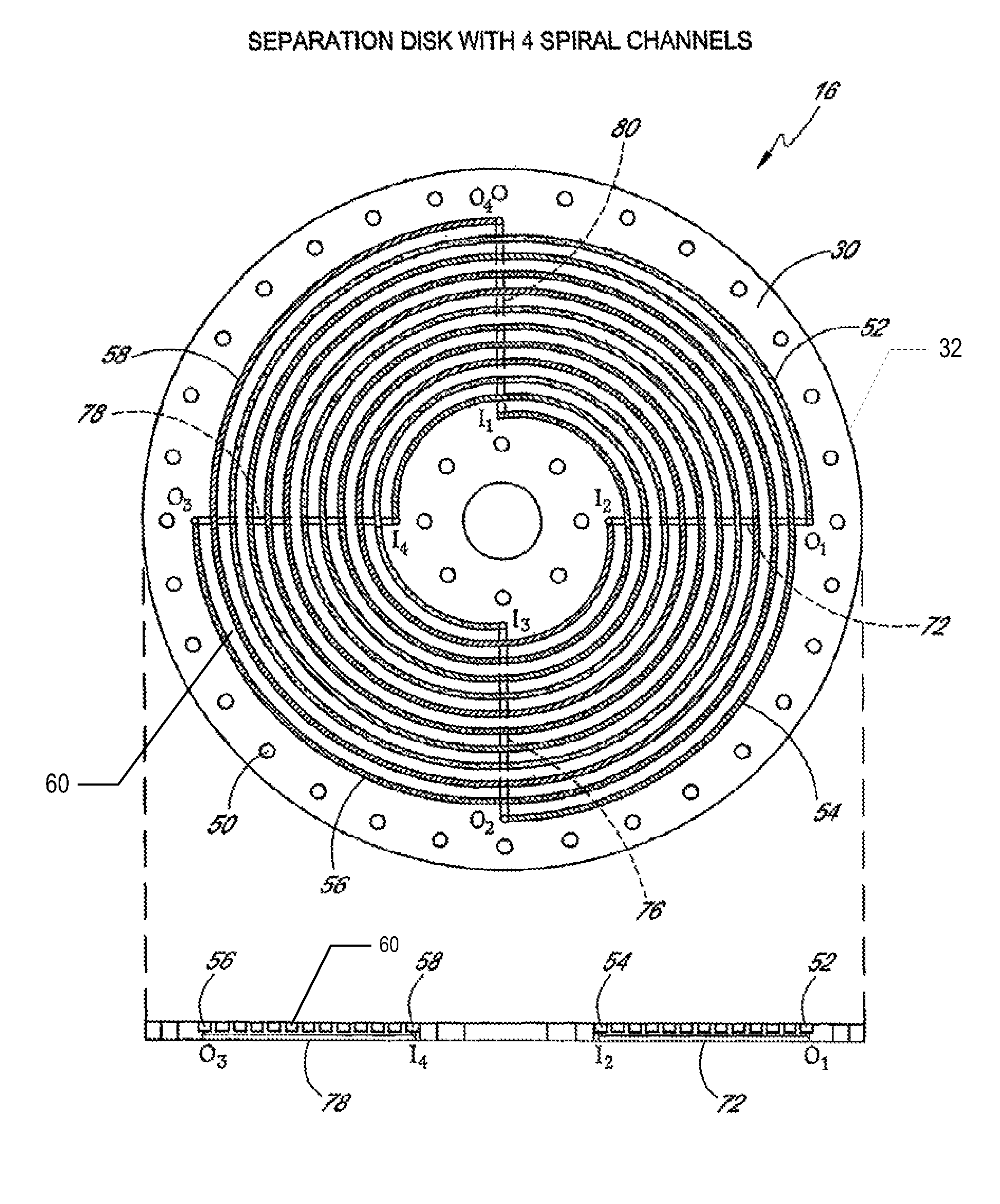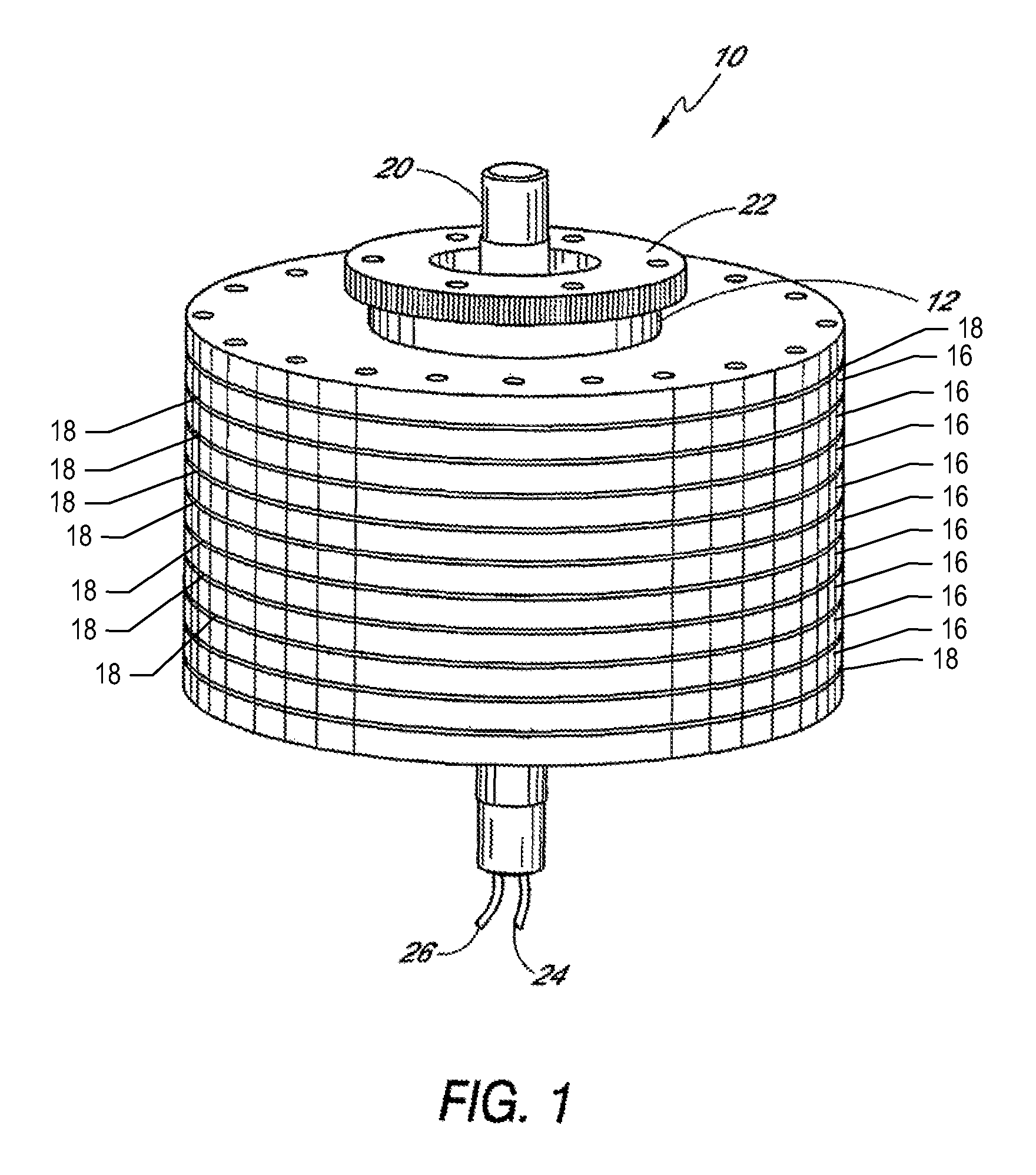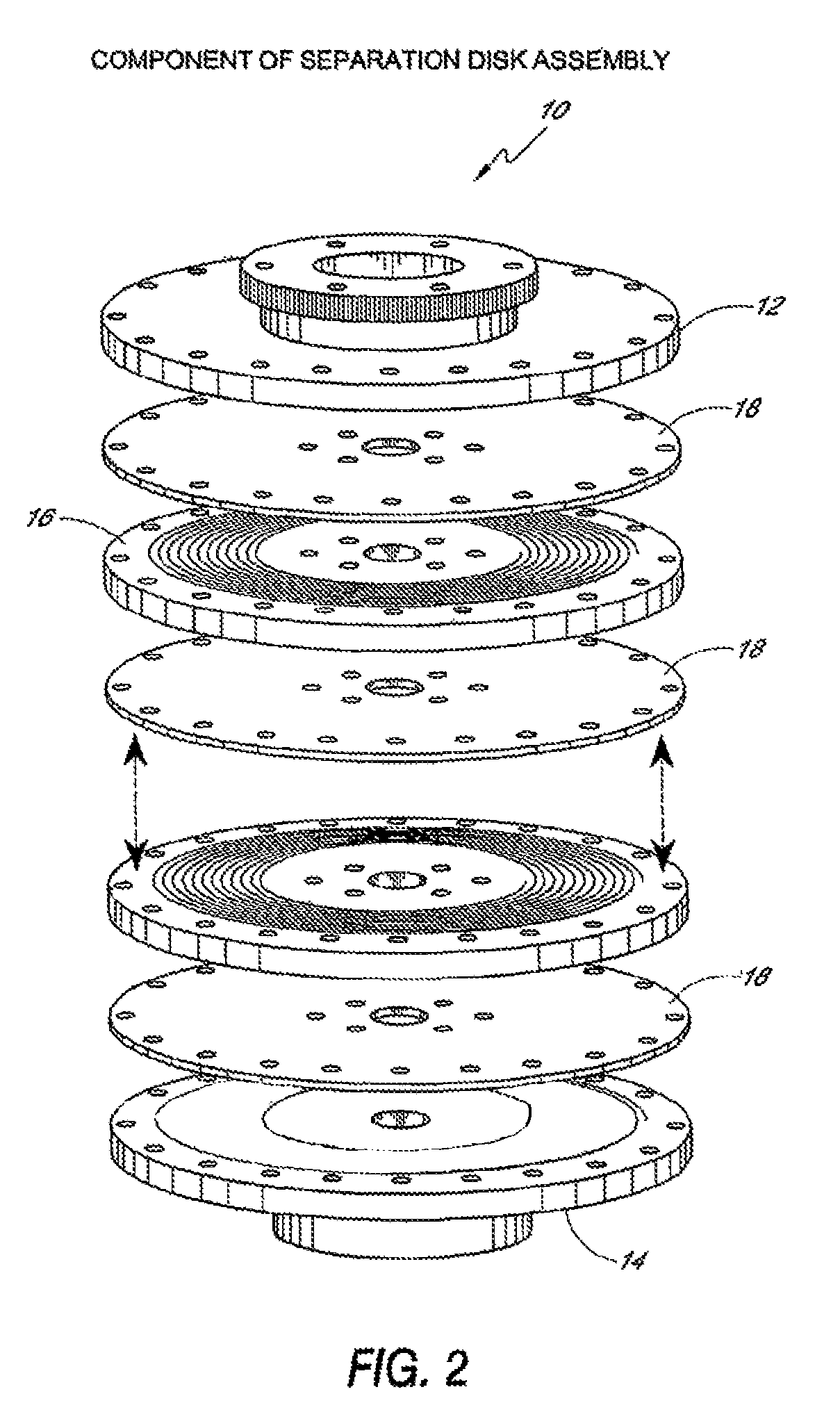Method and apparatus for countercurrent chromatography
a countercurrent chromatography and apparatus technology, applied in lighting and heating apparatus, separation processes, instruments, etc., can solve the problems of system failure to retain a satisfactory amount of stationary phase, loss of peak resolution, and affecting the efficiency of the system
- Summary
- Abstract
- Description
- Claims
- Application Information
AI Technical Summary
Benefits of technology
Problems solved by technology
Method used
Image
Examples
example
[0039]A suitable highly viscous, low interfacial two-phase solvent system is thoroughly equilibrated in a separatory funnel at room temperature and the two phases are separated before use. The sample solution is prepared by dissolving the sample in a proper volume (e.g. 1-5 ml) of the upper and / or lower phase of the solvent system. The spiral column assembly is first entirely filled with the stationary phase (upper or lower phase), followed by sample injection through the sample port The apparatus is rotated at 800 rpm while the mobile phase is eluted through the column at a desired flow rate. The separation may be repeated by changing the direction of the revolution and / or elution mode (i.e., head to tail and tail to head), although it is expected that the best result would be obtained by eluting the lower phase from the internal terminal toward the external terminal of the spiral channel at tail to head elution mode or the upper phase from the opposite direction in the head to tai...
PUM
| Property | Measurement | Unit |
|---|---|---|
| thickness | aaaaa | aaaaa |
| thickness | aaaaa | aaaaa |
| thickness | aaaaa | aaaaa |
Abstract
Description
Claims
Application Information
 Login to View More
Login to View More - R&D
- Intellectual Property
- Life Sciences
- Materials
- Tech Scout
- Unparalleled Data Quality
- Higher Quality Content
- 60% Fewer Hallucinations
Browse by: Latest US Patents, China's latest patents, Technical Efficacy Thesaurus, Application Domain, Technology Topic, Popular Technical Reports.
© 2025 PatSnap. All rights reserved.Legal|Privacy policy|Modern Slavery Act Transparency Statement|Sitemap|About US| Contact US: help@patsnap.com



